In softball, how you fit your glove can be the difference between success and failure on the pitch. In many ways, it’s the last piece of that fantastic diving grab in the outfield. You’ll also need an excellent fit to halt that line drive headed toward third base.
However, not all softball gloves are designed equally in size and composition. A player’s field position determines what glove size they wear. But other factors still determine precisely which glove a player needs.
But first,
How Do You Properly Measure and Fit Softball Glove?
When determining the length of a glove, check on the thumb or pinky finger area. You can use a tape measure to determine the length if a glove’s size is not included. You must measure from the index finger down along the glove to the middle of the heel.
Softball Glove Components
A softball glove has four primary components, which are listed below.
- Webbing: Every baseball and softball glove has a web that links the glove’s thumb to the fingers to catch balls and keep them secure in your glove. Glove webs exist in various shapes and sizes, the significant difference being the player’s personal choice of their position.
- Fingers: The only difference between a baseball and a softball glove’s fingers is the length of the fingers, which allows for a longer glove. However, depending on their choice, athletes will either insert one finger in the pinky hole or two fingers in it, causing the glove to seal unevenly.
- Palm. A softball glove’s palm or pocket works with the web to keep the ball tight in the glove once caught. Furthermore, the palm cushioning to the hand helps minimize stings while catching balls directly in the palm region.
- Heel: A glove’s heel is positioned below the palm and provides most of the structure to the glove’s form. This section is often the stiffest in a new glove and provides the majority of the overall cushioning to the lower hand and upper wrist.
Criteria for Choosing a Glove
Before buying a glove, you need to understand a few basic concepts.
- Type of throw: This means which hand you use to throw the ball (not which hand the glove is on), depending on whether the player is right- or left-handed.
- RHT: stands for a right-hand thrower. This means the player throws with their right hand while wearing a glove on their left.
- LHT: stands for a left-hand thrower. This means the player throws with their left hand while wearing a glove on their right.
We’ve previously explained that your position determines the optimal glove for you. However, there are other considerations:

Pocket Dimensions
Your playing position will determine the pocket size you choose. An outfielder’s glove, for example, will have a larger pocket than a middle infielder’s. This makes it easier for outfielders to catch fly balls.
Shortstops and second basemen often have a shallower pocket than middle infielders. This allows them to release the ball out faster, which is critical on double plays.
Webbing
There are many kinds of webbing found in baseball and softball gloves.
The most popular kind of webbing used for infielder’s gloves has a looser stitch that offers superior control for a quick release. It also does not take up significant amounts of dirt. Outfielders pick gloves with open webs to facilitate vision while sheltering them from the sun.
Generally, there are six different types of webbing to select from:
- Basket/Closed Web
- H-web
- I-web
- Trapeze Web
- Modified Trapeze Web
- Two-piece Closed Web
Youths Vs. Adults Gloves
A junior glove is used for younger athletes. The youth gloves are not constructed of the same high-quality leather as the adult gloves. But, the materials used make them simpler to close.
Youth gloves feature smaller, thinner fingers and are recommended for players under ten. Occasionally, players less than 12 years old may utilize them. However, children above 12 years should wear adult gloves.
You can fit an adult glove into a younger player’s hand by tightening the wrist’s back. This is done with softball gloves via Velcro strap, while baseball gloves need a small re-lacing.
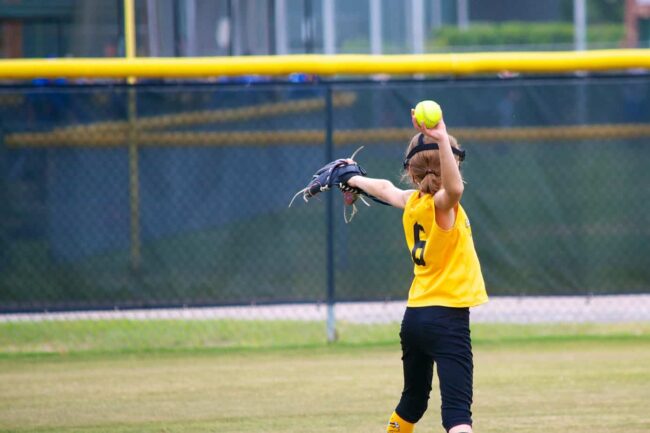
Differences in the Gloves by Position
Each glove design and type will have a different kind of web and pocket. Having the correct glove for your post, from the web to the fingers, may make all the difference. Here’s an explanation of each positional glove and why it’s crucial.
Types of Gloves by Position
Catcher’s Mitts
Closed pockets are standard in catcher mitts because they may be fastened with the greatest lacing and withstand the most wear without breaking.
Catcher’s gloves are sized differently as well. Instead of standard measurements, they are taken around the glove’s circumference to account for the complete mitt’s catching area.
Softball sizes typically vary from 29 to 35 inches.
First Baseman Gloves
A first baseman’s glove resembles a catcher’s mitt. However, it’s longer and has less padding. It features the same catching area as a catcher’s glove.
However, it is adaptable for scooping throws out of the ground. First-base gloves are more robust than conventional gloves, so the fingers do not flop back as they would in a typical fielder’s glove.
They also feature open web designs, which deepen and lighten the pocket. Given that younger children may find it challenging to shut the large glove, only children above ten should use first basemen’s gloves.
Baseball and softball players vary from size 11 to 13 inches.
Pitcher’s Gloves
These gloves will not have as much padding as conventional gloves and will instead depend on comfort. They are often more significant than other gloves, enabling pitchers to move their hands to grasp the ball swiftly. Their vastness also allows pitchers to mask their hand movements from the hitter before a pitch.
A pitcher does not need to be as concerned about the performance of their glove as other players do. However, comfort is crucial since they often must stop line drives that are hit back through the center and continually catching.
The glove should also not be so heavy. Many manufacturers create light versions of high-end gloves out of unique materials substantially lighter than ordinary gloves.
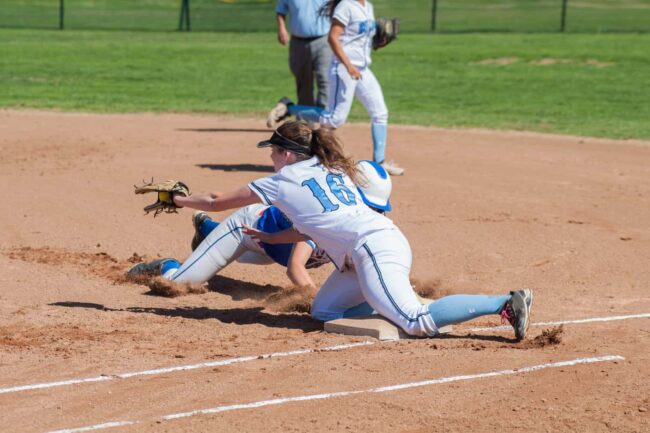
Infield Gloves
These smaller gloves are designed to allow rapid plays in the middle infield, such as a double play. They feature a deeper pocket and are shorter than other gloves. Infielders like an open pocket that allows them to get the ball out fast.
A baseball infield glove should be 11.25 to 12 inches long, while a softball glove should be 11.5 to 12.5 inches long. But the choice of web selection for these gloves is limited due to the giant ball.
Outfield Gloves
These bigger gloves are designed for diving catches and flying balls. This means the gloves are long and deep, with more finger support.
Baseball pockets are usually open, with the significant possibilities being a modified trapeze and an H-web. These pockets are ideal for long extension plays requiring the ball to stay in the glove, like diving plays and snow cones.
Because softball pockets must be bottomless to accommodate the size of the softball, they might be closed webs. An outfielder’s glove is typically 9 to 15 inches in size for both baseball and softball.
Testing the Fit: How Do You Know Whether the Glove is too loose or too tight?
Softball gloves will always have thick padding. Despite this, your ability to grip the ball will determine whether it is an excellent fit for you or not. You will know the glove is too big for you if your fingers sit on your palm while wearing it. Additionally, you would want to size down if you have difficulty poking your fingers through the outer hole.
If younger first basemen (10 years or below) cannot close the mitt, you can be assured that it is an infielder’s glove. Also, while wearing the gloves, your fingers should not hit the end of the finger pockets. If they do, the glove is most likely too tight for you.
Concerning weight, mitts are generally heavier than gloves. However, if you want to keep off too heavy mitts, they prevent you from transferring the ball to your free hand. If the mitt impedes quick transfer, it will slow the speed at which you transfer the ball to your teammates.
Ensure you choose the right fit for your comfort and quick throws.
People Also Ask
- Should I Get Batting Gloves for Softball?
Batting gloves assist players in performing better in the batter’s box. A batter aims to make firm contact with the softball while throwing with maximum force and control. Hence, they provide the player a better grip when swinging and making contact. They also make a player’s game more comfortable.
- Can a Softball Glove be too Broken-in?
Yes, a glove might be overly soft. However, don’t be concerned if your child played 1B or OF (or was ten or younger). However, middle IFs prefer tougher (and smaller) gloves to swiftly get the ball out of their gloves.



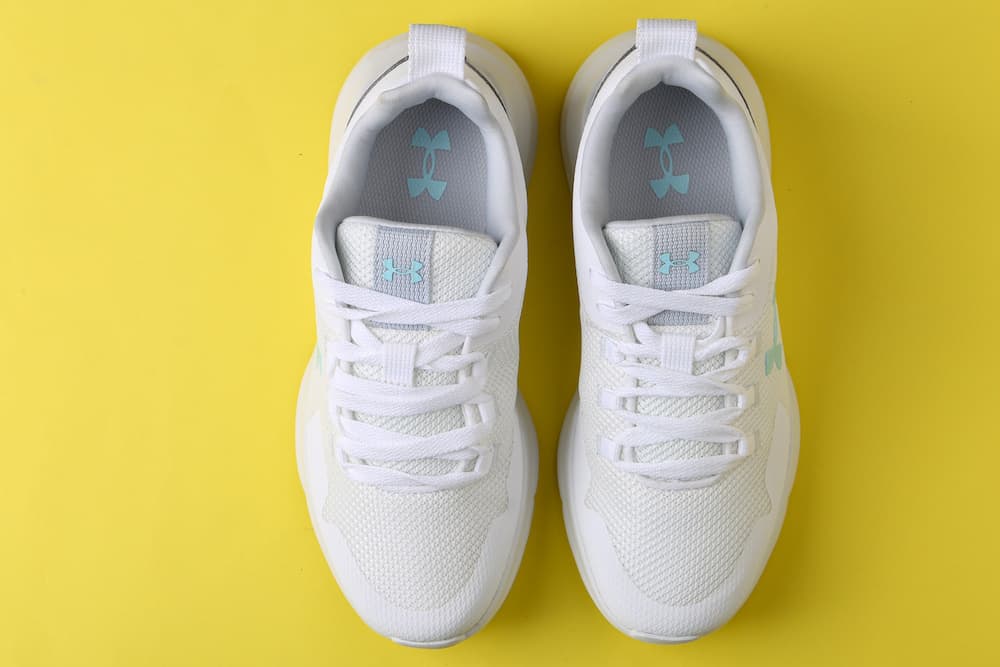

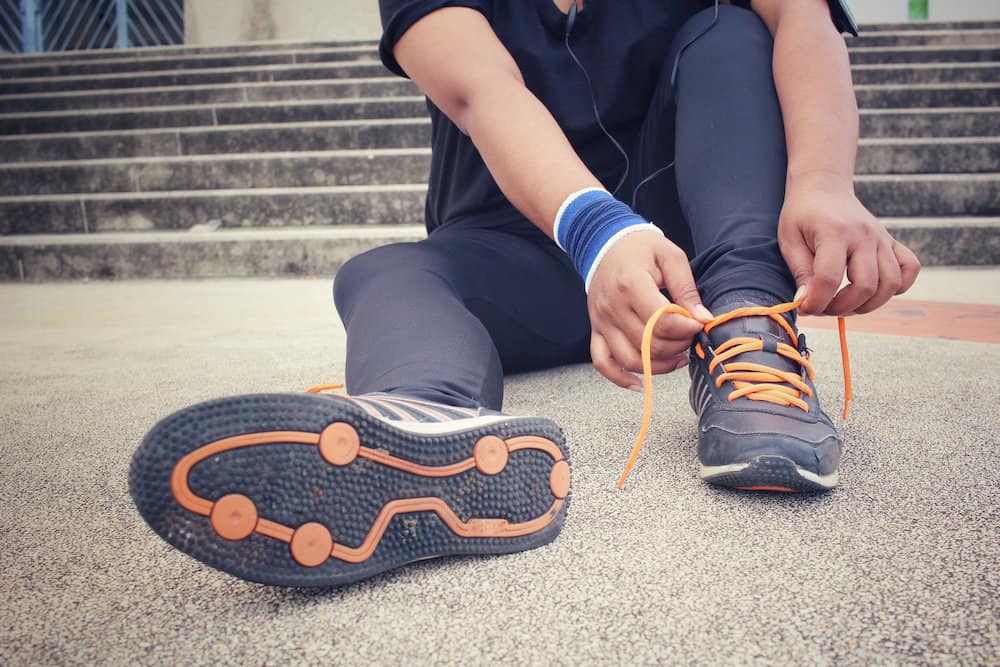
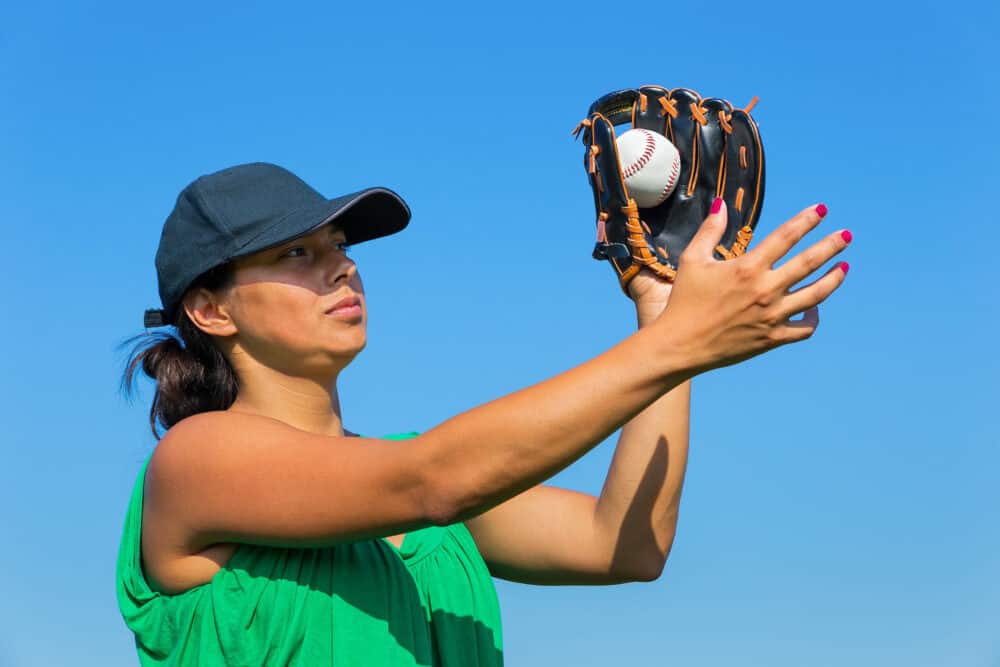
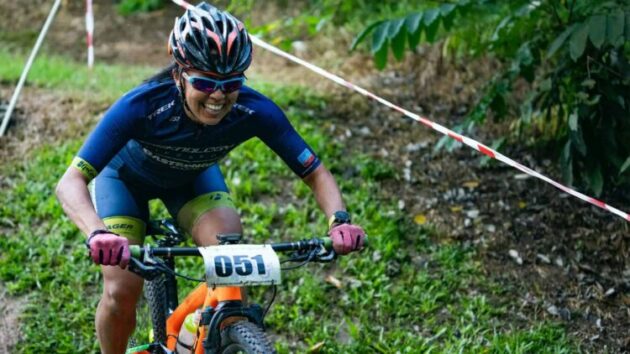






I was in need of this information about how softball gloves are supposed to fit. I need to buy new gloves for my grandchildren and did not know much about how they fit until I read your detailed guide. I appreciate you sharing this information with your blog readers and will be sharing this article to help others learn about how the softball gloves is supposed to fit.
Hi, Jannette, and thank you.
Thank you for your kind words.
When I read your comment, I thought you could have benefited from this article. It gives ideas and knowledge about which size you need Softball gloves.
Great to hear about your benefit of the article too.
Don’t hesitate to contact me to help you with anything else or if you have any questions.